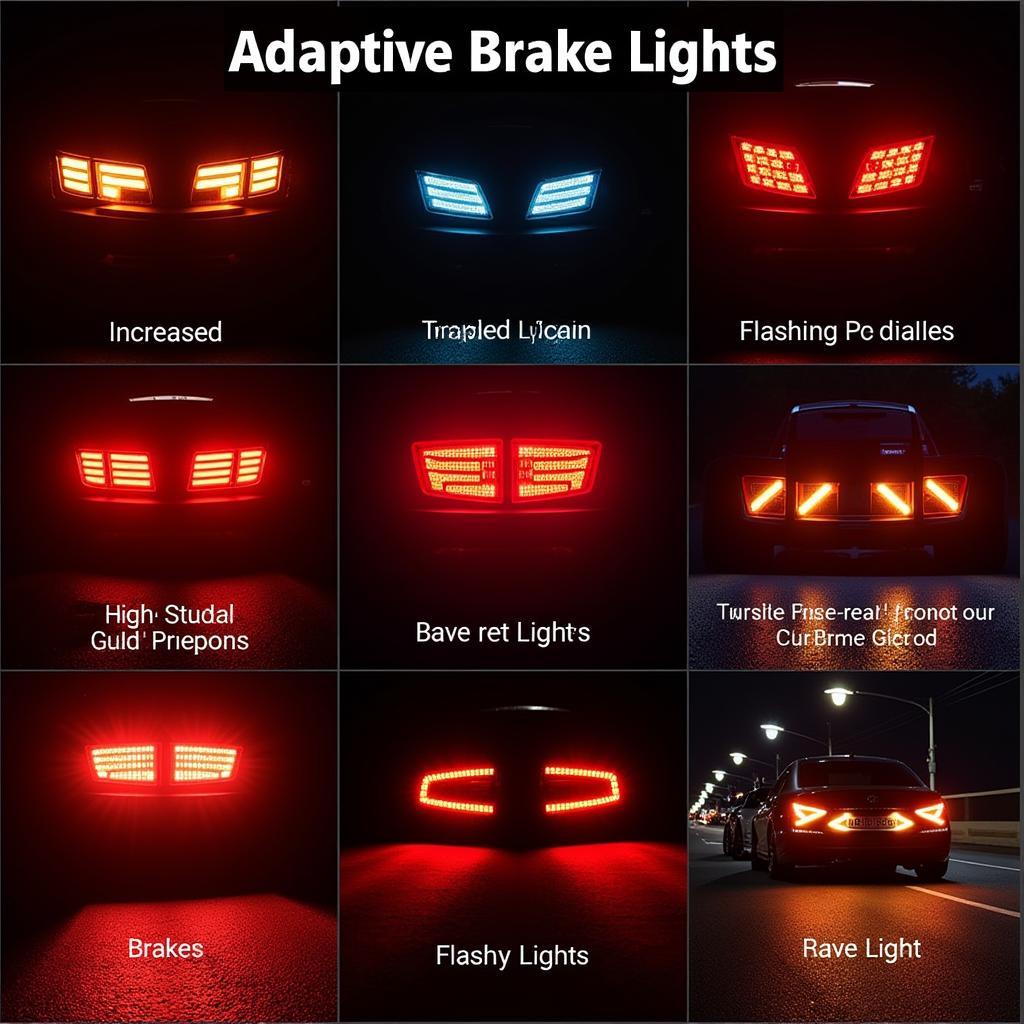Adaptive brake lights are an innovative safety feature designed to reduce the risk of rear-end collisions. Unlike traditional brake lights that illuminate with a constant intensity when the brakes are applied, adaptive brake lights adjust their brightness or flashing pattern based on the severity of braking. This dynamic signaling aims to provide a more urgent warning to trailing drivers, especially in situations where a quick reaction time is crucial. But how effective are these intelligent lights in real-world driving scenarios? This article delves into the science, technology, and real-world effectiveness of adaptive brake lights in mitigating rear-end collisions.
 Adaptive Brake Light Activation
Adaptive Brake Light Activation
Understanding the Need for Adaptive Brake Lights
Rear-end collisions constitute a significant portion of road accidents globally. Often, these accidents occur due to a delayed reaction from the trailing driver, especially in situations involving hard braking. Traditional brake lights, while effective in signaling braking action, might not convey the urgency of a sudden stop adequately. This is where adaptive brake lights come into play. By escalating the warning signal during hard braking, they aim to capture the attention of the trailing driver more effectively and potentially avert a collision.
The Technology Behind Adaptive Brake Lights
Adaptive brake lights utilize various technologies to provide a more noticeable warning signal. Some systems increase the brightness of the brake lights significantly during hard braking, making them more conspicuous even in daylight conditions. Other systems employ a flashing pattern, quickly alternating between bright and dim states to attract attention.
 Different Types of Adaptive Brake Lights
Different Types of Adaptive Brake Lights
Advanced adaptive brake lights might even incorporate additional warning methods, such as projecting a warning symbol or message onto the road surface behind the vehicle. These systems rely on sensors to detect deceleration forces, vehicle speed, and even the proximity of other vehicles to determine the appropriate intensity and pattern of the brake light signal.
The Effectiveness Debate: Do Adaptive Brake Lights Really Work?
Several studies have investigated the effectiveness of adaptive brake lights in reducing rear-end collisions. The results, while promising, are not entirely conclusive. Some studies suggest that adaptive brake lights can reduce rear-end collisions by a noticeable percentage, particularly in situations involving high-speed driving or poor visibility.
However, other studies indicate a more modest impact, highlighting the influence of factors such as driver behavior, traffic density, and road conditions. It’s also important to consider potential drawbacks, such as the possibility of distracting drivers following behind or causing confusion in situations where hard braking is necessary but not indicative of an emergency.
The Future of Adaptive Brake Lights
Despite the ongoing debate surrounding their effectiveness, adaptive brake lights represent a significant step towards enhancing road safety. As technology evolves, we can expect to see even more sophisticated and effective adaptive brake light systems. These future iterations might incorporate vehicle-to-vehicle communication, enabling cars to share braking information directly, further reducing reaction times and mitigating the risk of collisions.
Conclusion: A Step Towards Safer Roads
Adaptive brake lights, while not a foolproof solution, offer a promising avenue for enhancing road safety by providing a more conspicuous warning to trailing drivers during emergency braking situations. As research progresses and technology advances, we can anticipate more intelligent and effective adaptive braking systems, contributing to a future with fewer accidents on our roads.
